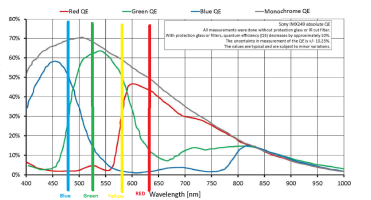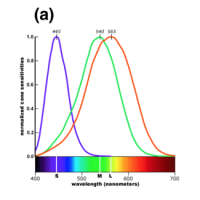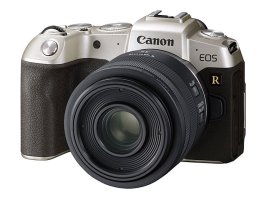You are using an out of date browser. It may not display this or other websites correctly.
You should upgrade or use an alternative browser.
You should upgrade or use an alternative browser.
Canon EOS RP Specifications & Images
- Thread starter Canon Rumors
- Start date
If the EOR RP is really comming with these updated specs, then Canon has to add a lot in their next Firmware update to the EOS R.
Otherwise it will just rest in peace on the shelves. So many features missing with the same Processor and just a larger sensor.
Disappointing.
Otherwise it will just rest in peace on the shelves. So many features missing with the same Processor and just a larger sensor.
Disappointing.
Upvote
0
Sd card will be inside the battery door like on the SL2 and other compact camera bodies. The grip extension is just for your pinky and to help with the larger rf lenses when mounted. I'm guessingIt's a well engineered extension grip (sarcasm). The real question is, why is there a picture of a SD card or battery on it?
Upvote
0
Foveon: Foveon suffers from the fact that different wavelengths travel up to different depths into a silicon block. The deepest layer gets strongly attenuated light in that wavelength region. Hence you have different QEs for different colors which counteracts the great principle of evaluating three different wavelength (or color) channels.
CFA issues: CFA must NOT be changed to go from 100MP bayer image reconstrugtion to pixel binning of four R-G-G-B pixel quadruplets. NOT CHANGING THE CFA is the solution to sample ALL COLOR CHANNELS for ONE FINAL IMAGE PIXEL. Trying to do that in ASCII graphics (fixed font not worked, so used dots as spacers):
CAMERA in HIGH RESOLUTION MODE
100 MPixel bayer sensor read out to 100 MPixel Image = a lot of deriving non-existing per pixel data from RAW)
R . . . G . . . . . . . . . . . . . . . RGB . . . RGB
. . . . . . . . . = debayering =>
G . . . B . . . . . . . . . . . . . . . RGB . . . RGB
CAMERA in HIGH COLOR QUALITY MODE + low light
100 MPixel bayer sensor read out to 25 MPixel IMAGE = getting measurement values from RAW
R . . . G . . . . . . . . . . . . . . .
. . . . . . . . . . . . . . . = binning => RGB
G . . . B . . . . . . . . . . . . . . .
Switching the mode on site helps to reduce file size under certain circumstances while retaining qualities needed in these cases.
Except the actual filter on the Bayer arrays of most cameras are nowhere close to the actual "red" at 640nm, the actual "green" at 530nm, and the actual "blue" at 480nm that our RGB color reproduction systems use. So all of the information from four "RGGB" pixels still has to be translated to actual "RGB" by interpolating the differences in response between the three filters that are actually centered on a slightly violet shade of "blue" at about 455nm, a slightly yellow shade of "green" at about 540nm, and, most significantly, a slightly orange shade of yellow at about 590-600nm that we call "red".

The response of our retinas is similar:

Our "S" cones ("s" is for short wavelength, not 'small') have peak sensitivity at about 445nm and not 460nm "blue", our "M" cones ('medium wavelength') have peak sensitivity at about 540nm, not 530nm "green", and our "L" cones ('long wavelength', not 'Large') are most sensitive at about 565nm which is a slightly green shade of "yellow" and nowhere close to 640nm "red."
Upvote
0
60D was a hybrid I hate to this date. Canon misstepped with this one. To that date, I considered xxD being a (semi)professinal line. 70D was a big improvement, a nice and consistent camera and imo it is not true, that it did not provide a sensor performance update. I remember something like 1/3 of stop at least, as well as 70D was the first camera ever, providing DPAF, so by all means, it as a new sensor.
Yeah, the 7D was the true successor to the 50d in many ways. Then Canon got caught in a product refresh cycle in which the 70D, released in 2013, outperformed 2009's 7D in a few ways, then the 7D Mark II leapfrogged the 70D in 2014 before the 80D did the same thing in some respects in 2016.
Of course, those just who have to have the absolute best of everything within the Canon APS-C ecosystem wound up buying a 7D in 2009, then a 70D in early 2013, then a 7D Mark II in late 2014, and an 80D in early 2016. Maybe that was Canon's strategy for maximizing sales all along?
I went 50D → 7D → 7D Mark II in terms of APS-C bodies. I wasn't really planning to ever buy another APS-C body when the 7D Mark II introduced the "flicker reduction" feature that revolutionized shooting sports under flickering lights. I was also extremely frustrated with the shot-to-shot inconsistency of the 7D's AF system and had started using the 70-200/2.8 on a 5D Mark III and just cropping more when needed. With the better AF consistency and flicker reduction, the upgrade from the 7D to the 7D Mark II was worth the cost for me. The much higher "keeper" rate and much easier workflow associated with having almost all frames consistently the same color and brightness not only from one side of the frame to the other, but from shot-to-shot as well, has paid for itself several times by now. Plus the shutter firing at the peak of stadium lights' cycle gives about a half stop faster Tv or lower ISO than when shooting manually without it. I went from ISO 3200, f/2.8, 1/640 to ISO 3200, f/2.8, 1/800-1/1000 in most of the high school football stadiums where I shoot.
As to the 60D → 70D → 80D sensor evolution, there's a LOT more improvement between the 70D and 80D than the 60D to 70D as far as the IQ of still images is concerned. DPAF was revolutionary for video work by those who couldn't (or did not want to) use manual focus when shooting video with a DSLR, but it did nothing to improve still image quality. The difference in the microlenses may have actually hurt a bit, which might have been overcome by advances elsewhere in the design and implementation. It was definitely a newer, slightly higher resolution sensor with DPAF, but the performance for full resolution stills was not noticeably improved over the 60D.
Upvote
0
More DR IS more realistic
More colors in between
No, that is more bit depth. More DR is more brightness levels at the edges.
Upvote
0
Introducing a camera that has worse SNR at high ISO compared to a model that was released five years prior is indeed a step back. And this while competitors were making significant improvements in this area year after year. And questionable dynamic range at base ISO while competitors are breaking DR records with each new full frame sensor they release.
Now if Canon chooses to use the exact same 6D mk ii sensor on RP, that would be a "jump" back.
Of course, Canon can still put their marketing muscle behind this product and make it successful with attractive pricing, promotions and product placement throughout the retail channel. Once they have significant market share in the full frame mirrorless market and a respectable arsenal of RF lenses, they can bring out RF mount cameras with better sensors and features and drive the upgrade cycle.
How is 26.2 dB *worse* than 26.2db?
Upvote
0
no - and i really dont understand this. Are beginners and enthusiasts not hit by sensor dust ? Would they not identify large spots on their printed familiy images ? I think it is one of the innovations of the R that it solve's the dust issue much better than any other mirrorless - and they removed it immediately from the second camera of the R family. Just don't get it. (but included focus bracketing which i would like to have in my R)Does it have sensor protection too, like EOS R, when the lens is not connected to the body?
Upvote
0
Jared seem to think it was because noobs tend to touch the sensor and it’s better to not have the shutter to tempt people poking in there ...no - and i really dont understand this. Are beginners and enthusiasts not hit by sensor dust ? Would they not identify large spots on their printed familiy images ? I think it is one of the innovations of the R that it solve's the dust issue much better than any other mirrorless - and they removed it immediately from the second camera of the R family. Just don't get it. (but included focus bracketing which i would like to have in my R)
Upvote
0
Well I do, it is literally the price to pay for the lower price, simple differentiation that has always been a tool that they've used for many years. People will complain, but I really don't think they will change anything about the product other than potentially refining features that it came with, like eye-AF and stuff.no - and i really dont understand this. Are beginners and enthusiasts not hit by sensor dust ? Would they not identify large spots on their printed familiy images ? I think it is one of the innovations of the R that it solve's the dust issue much better than any other mirrorless - and they removed it immediately from the second camera of the R family. Just don't get it. (but included focus bracketing which i would like to have in my R)
Focus stacking is another feature they could add with a much later firmware to the EOS R (but I am not sure it can't be done more efficiently manually, it is just more convenient).
Upvote
0
Well I do, it is literally the price to pay for the lower price, simple differentiation that has always been a tool that they've used for many years. People will complain, but I really don't think they will change anything about the product other than potentially refining features that it came with, like eye-AF and stuff.
Focus stacking is another feature they could add with a much later firmware to the EOS R (but I am not sure it can't be done more efficiently manually, it is just more convenient).
There are certain features imo, which help to define a brand. In the case of Canon, it is DPAF and tilty-flippy. It could be this nice little feature, which could become another one. Some marketing honcho just apparently decided to think otherwise.
Upvote
0
If the M50 is selling well with these same features, then I don't see why they wouldn't do the same thing here in exchange for a lower pricetag. To be honest, the 4k rolling shutter is an even bigger problem, so not many people will buy it for the 4k video anyway.There are certain features imo, which help to define a brand. In the case of Canon, it is DPAF and tilty-flippy. It could be this nice little feature, which could become another one. Some marketing honcho just apparently decided to think otherwise.
Upvote
0
They could’ve easily made it a feature that was disabled by default.Jared seem to think it was because noobs tend to touch the sensor and it’s better to not have the shutter to tempt people poking in there ...
Upvote
0
Today, like in some socialist countries, everyone receives the bare necessities for free. I wonder if folk receiving one of these for free would still complain about the "value"?
Jack
Jack
Upvote
0
well i'm trying to say that the increased amount of dust on mirrorless camera's sensors is a problem and Canon had a nice idea how to solve that to some extend. It really is something special compared to the competition. The camera lacks a lot of things not only because it's entry level but because Canon does not have it (yet) - removing this clever mechanism to protect the sensor is in my eyes a bad decision. I'm not wondering that the RP does not have a lot of new things compared to the R and it's ok to reduce the shutter speed and the x - sync and dont provide a real battery grip and and ... but removing the sensor protection is simply a bad idea in my eyes. By the way, (side note) i've installed firmware 1.1 on my R and love the silent shutter in contiues shooting mode.Well I do, it is literally the price to pay for the lower price, simple differentiation that has always been a tool that they've used for many years. People will complain, but I really don't think they will change anything about the product other than potentially refining features that it came with, like eye-AF and stuff.
Focus stacking is another feature they could add with a much later firmware to the EOS R (but I am not sure it can't be done more efficiently manually, it is just more convenient).
Upvote
0
Just noticed this: "Single Point Spot AF is a newly included feature that the manufacturer believes is a first – not just in terms of its own mirrorless series, but anyone’s." That's a very nice feature for bird photography when you need to pinpoint a small one in a difficult background.
Upvote
0
well i'm trying to say that the increased amount of dust on mirrorless camera's sensors is a problem and Canon had a nice idea how to solve that to some extend. It really is something special compared to the competition. The camera lacks a lot of things not only because it's entry level but because Canon does not have it (yet) - removing this clever mechanism to protect the sensor is in my eyes a bad decision. I'm not wondering that the RP does not have a lot of new things compared to the R and it's ok to reduce the shutter speed and the x - sync and dont provide a real battery grip and and ... but removing the sensor protection is simply a bad idea in my eyes. By the way, (side note) i've installed firmware 1.1 on my R and love the silent shutter in contiues shooting mode.
I've mixed feelings on the design of the shutter dropping to protect the sensor it exchanges one vulnerability for another. I really do like the concept but when I see that shutter exposed it just makes me feel a little uneasy it seems so delicate.
Upvote
0
GMCPhotographics
Canon Rumors Premium
Introducing a camera that has worse SNR at high ISO compared to a model that was released five years prior is indeed a step back. And this while competitors were making significant improvements in this area year after year. And questionable dynamic range at base ISO while competitors are breaking DR records with each new full frame sensor they release.
Now if Canon chooses to use the exact same 6D mk ii sensor on RP, that would be a "jump" back.
Of course, Canon can still put their marketing muscle behind this product and make it successful with attractive pricing, promotions and product placement throughout the retail channel. Once they have significant market share in the full frame mirror-less market and a respectable arsenal of RF lenses, they can bring out RF mount cameras with better sensors and features and drive the upgrade cycle.
I'm sure that for 99.9% of this camera's intended audience / purchasing market....the slightly inferior SNR isn't an issue. The only people who seem to worry about things like this are Sony / Nikon trolls who seem to think it's the only measurement that matters.
For most users this camera will outperform 99% of it's users.
Upvote
0
Similar threads
- Replies
- 538
- Views
- 180K
- Replies
- 15
- Views
- 4K
- Replies
- 173
- Views
- 58K

